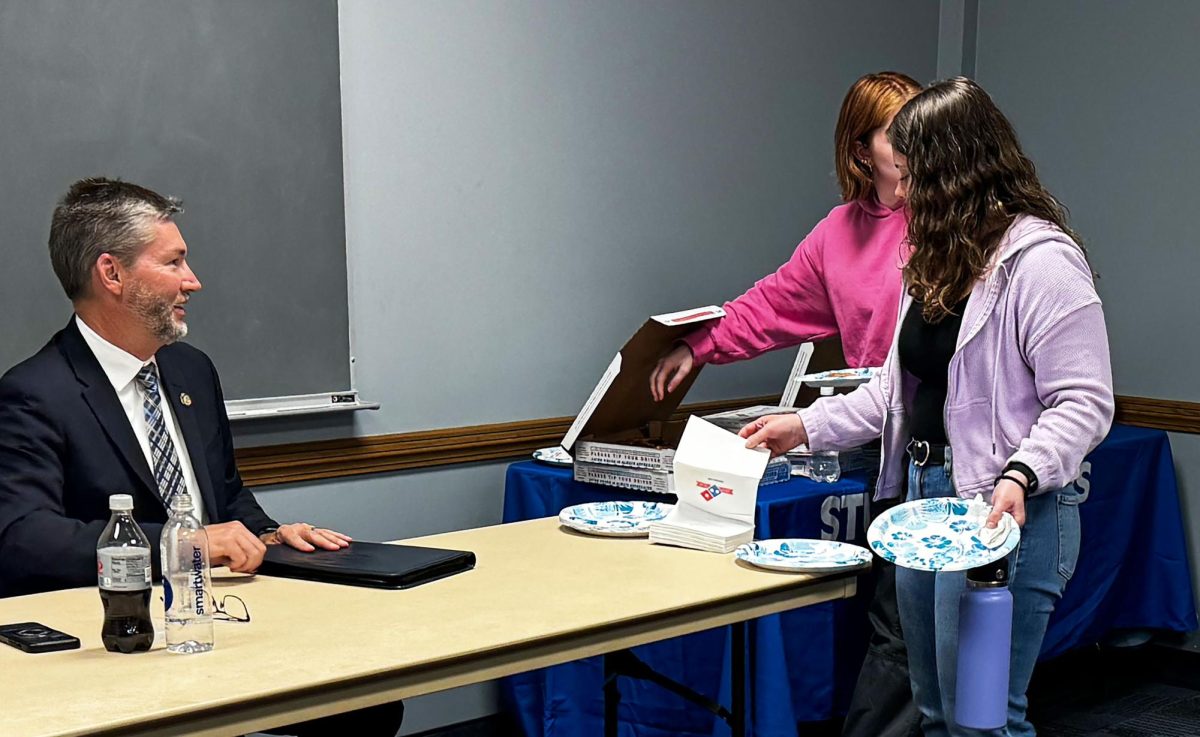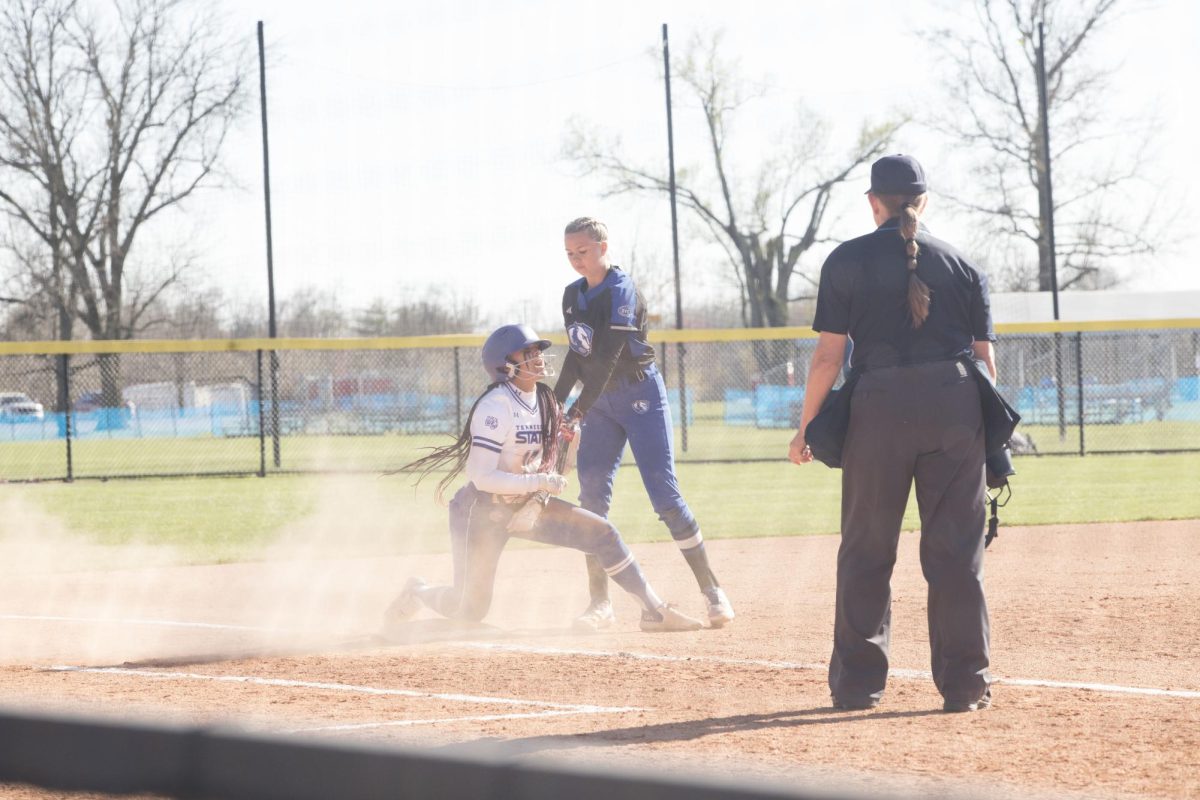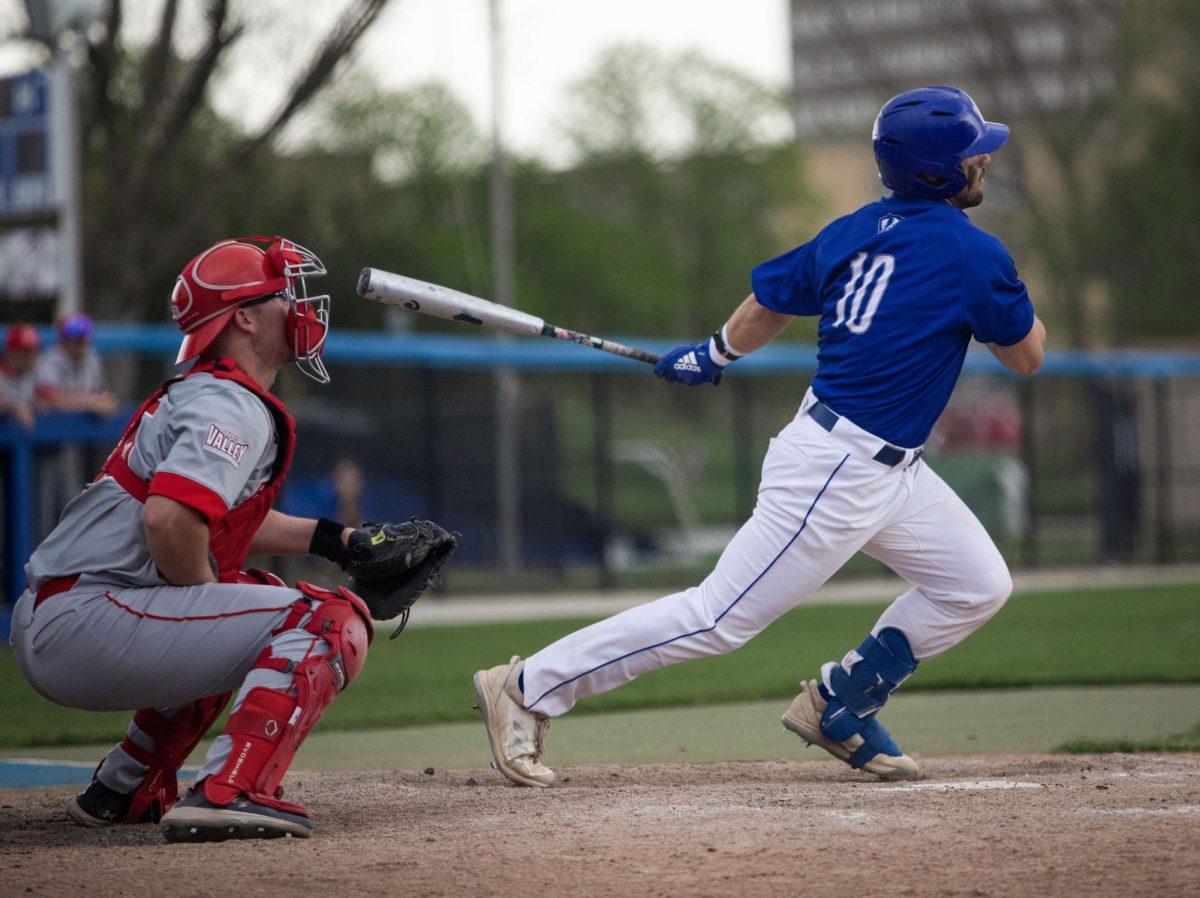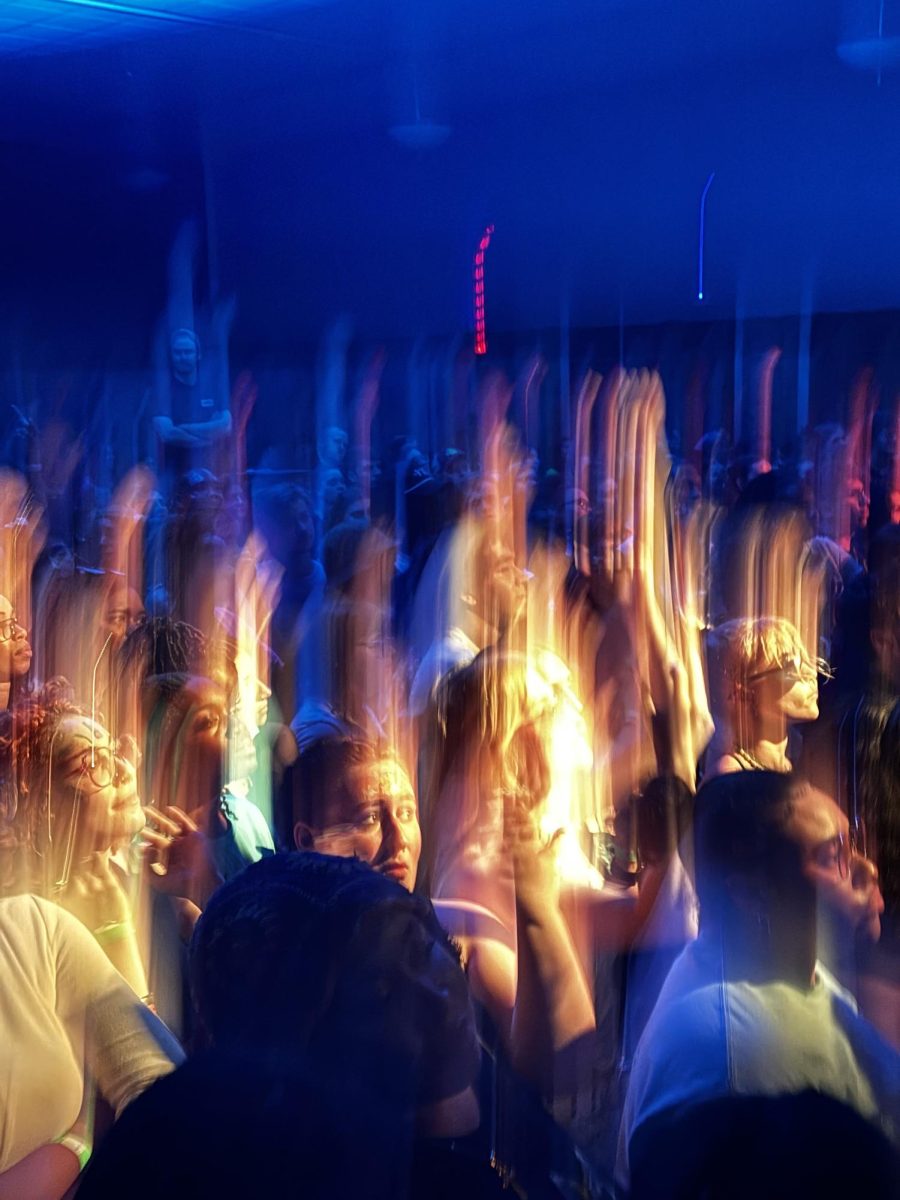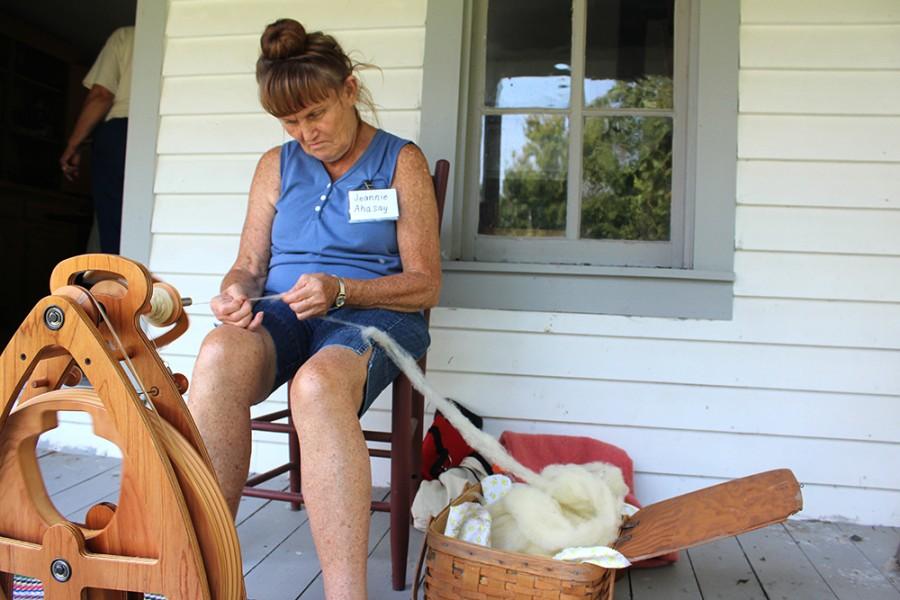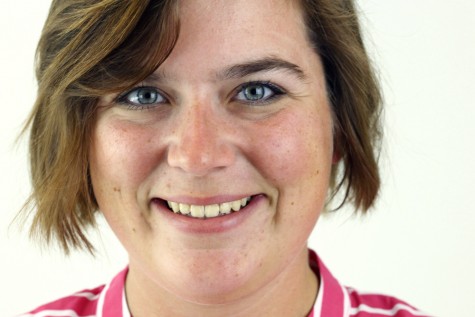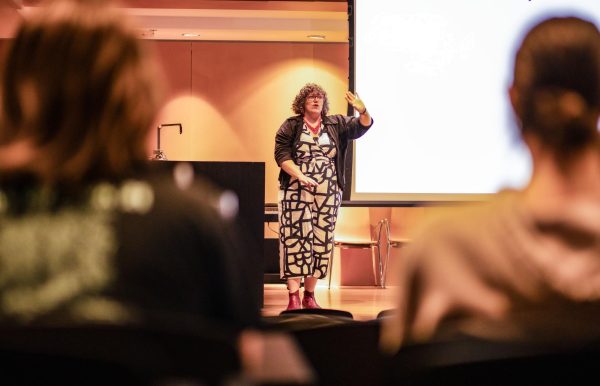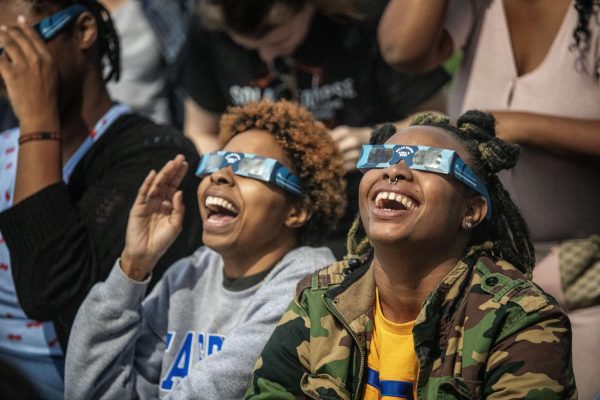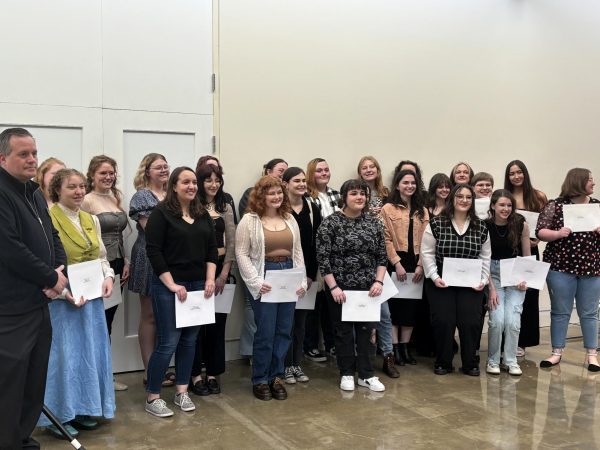1917 tornado remembered through research
Jeannie Ahasay, a volunteer at the Five Mile House, demonstrates how women in pioneer times would spin yarn out of sheep’s fleece on Aug. 30. Ahasay said it would probably take about three to five hours to spin one spindle of yarn if she sat down and just did that.
August 30, 2015
The Mattoon/Charleston Tornado of May 26, 1917 is said to be the third deadliest tornado to hit Illinois, according to the National Weather Service.
William Lovekamp, a professor of sociology and anthropology, presented his research of the tornado at the “Coles Co. and the 1917 tornado” event at the Five Mile House Sunday.
Lovekamp said he has been doing research on disasters for about 15 years and just began doing research on the 1917 Mattoon/Charleston Tornado back in the spring.
Lovekamp teaches a course about the sociology of disasters and said he already had interest in the research
“I thought this was a good opportunity to do something that’s local,” Lovekamp said. “It was one of the most significant and deadly tornado’s in the state.”
Through his research, Lovekamp found that roughly 53 people were killed and 409 people were injured in Mattoon, while 38 were killed and more than 180 were injured in Charleston.
Lovekamp said the estimated damage costs in Mattoon were about $1.28 million and around $800,000 in Charleston.
Even though they are thought as first responders, the police and fire departments are secondary responders compared to the members of the community, Lovekamp said.
Lovekamp said neighbors and other members of the community would come out to help in any way they can before the first responders can get there.
“I absolutely love reading the stories of the community and how neighbors help neighbors,” Lovekamp said.
Dick Hummel, the vice president of the board of directors, and Gary Foster, a committee member for the house, knew about Lovekamp’s research and asked Lovekamp to come present his research.
Lovekamp said the House tries to host events and presentations that are historically specific to the area.
Lovekamp said he still has some research to do over the next year and a half before the 100th anniversary of the Tornado.
“I would absolutely love for there to be some commemoration of some sort,” Lovekamp said.
Before the presentation started, there were demonstrations happening at different parts of the house property, along with an activity for children and the musical entertainment.
Mackville, a bluegrass/gospel band even performed during the event.
Terry Schlabach, the upright bass player for Mackville, said they have been playing at some of the house events for about five years.
Schlabach said the house usually would ask them to come back and play twice a year.
Myrna Madigan and Jeannie Ahasay, volunteers at the house, were also demonstrating how to spin yarn at the house.
Madigan said the women of the house would spin wool or animal fleece into yarn so they would have something to weave with.
An area for the children who attempted to make their own clay marbles was also a demonstration at the house and they would smash the dry clay into powder, mix it with water and shape it into however big of a marble they wanted.
Mackenzie Freund can be reached at 581-2812 or at [email protected]






